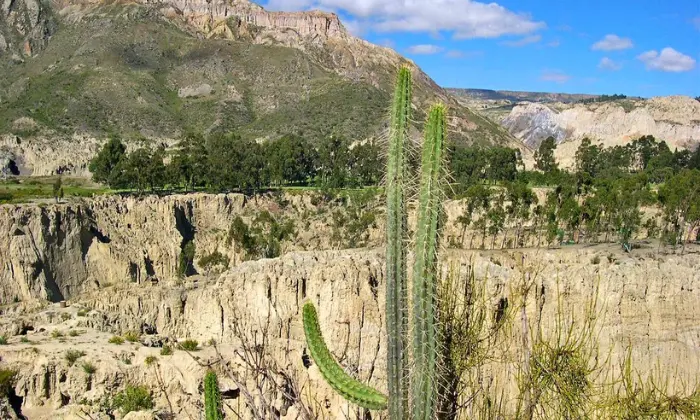- (562) 208-0148
- robertscompletecare@hotmail.com
Discover San Pedro Cactus with Robert's Complete Care

The San Pedro cactus is a popular species native to the Andean mountain range and has been used for centuries in traditional South American healing practices. It has found its way over time into local myths, traditions, and beliefs with many cultures believing it can connect humans with superhuman abilities and even with spirits. San Pedro cactus has many beneficial uses such as treating certain illnesses and psychological issues.
It originated in Peru, but with its introduction to other cultures, it has become a popular medicinal plant all around the world. The San Pedro cactus is an important element of many cultural histories and should be respected for its storied legacy of being both a source of healing and suffering alike.
San Pedro Cactus Origin
The origin of the San Pedro cactus is shrouded in mystery, with some sources claiming it was being used ceremonially by indigenous civilizations centuries before Columbus arrived in South America.
However, its origin is largely considered to be Northern Peru and Bolivia where it still grows wild today. It may have been brought to these regions by migrating people of the Amazonian basin, where it likely has a much longer history.
This columnar cactus can grow anywhere between 3-6 meters tall and has uniquely large leaves, thick stems, and sweet-tasting edible fruit.
There are also many traditional uses associated with the plant such as healing ailments as well as additional benefits including spiritual growth through rites and ceremonies conducted worldwide today.
With modern advancements, extracts from these cacti are also being used in scientific laboratory studies due to their alkaloids which produce a wide range of effects on various parts of the body.
How to Grow and Care San Pedro Cactus
Growing and caring for a San Pedro Cactus can be relatively straightforward. To ensure that your cactus will thrive, it is important to use your favorite soil-based potting mix with some added organic material like well-rotted manure or compost.
- During its active growth period, San Pedro Cactus will require frequent watering – approximately once per week – but it should not be allowed to sit in water.
- Seeds are available and should be planted in shallow seed trays with a cactus compost medium – moisten but don’t over-water as this can cause rotting.
- Finally, provide direct sunlight throughout the day as well as warm temperatures to encourage germination and growth.
San Pedro Cactus in Your Lawn and Backyard
The San Pedro Cactus has many benefits and is sure to enhance your lawn with its unique, eye-catching look. The cactus requires little care, so you will not have to worry about taking time out of your day for maintenance. Most of the care involves watching for buds to separate them for fuller and healthier growth.
Planting the San Pedro Cactus in your lawn or backyard will bring vibrancy to any outdoor space. Further, these cacti love drier environments such as sandy soil or clay better than other types of plants, making it perfect for areas that are usually uninviting for typical lawn places to grow.
With their brightness and easy caretaking, the San Pedro Cactus is a must-have if you are looking to spruce up your outdoor area. Contact us at robert complete care for the expert opinions.
San Pedro Cactus Seeds Use
The San Pedro cactus, scientifically known as Echinopsis pachanoi, is a large columnar cactus native to the Andes mountains. Although it has become an endangered species due to deforestation and climate change in its native habitats, this majestic plant remains popular around the world.
Its seeds, fruits, and powder can be used for many different reasons.
- San Pedro Cactus Fruit: The seeds of San Pedro Cactus have sometimes been used as food, while the fruits can be juiced or even made into jams and jellies.
- San Pedro Cactus Powder :San Pedro Cactus Powder extracted from its trunk is highly sought after for its medicinal properties that help fight diseases like cancer and diabetes.
- San Pedro Cactus Drug: It also is known to be mixed with other chemicals to create dangerous San Pedro Cactus drugs like ketamine and PCP.
Therefore, care must be taken when determining how you will use San Pedro cactus seeds or powder!
Death of San Pedro Cactus
The death of the San Pedro Cactus has been an ongoing issue of its ornamental value, its healing properties, and its unique beauty.
It is believed to have multiple causes, with its main ones being cutting, burning, chemical treatments, and severe weather conditions.
According to some sources, its natural cycle also accounts for its demise. Being a slow-growing species, the presence of illegal cultivators has also been seen as contributing to its risk of extinction.
Since this species is so endangered, it is important to take necessary precautions to avoid its death.
San Pedro Cactus Cost
The San Pedro Cactus is becoming increasingly popular for its purported spiritual and medicinal purposes. When purchased, San Pedro Cactus cost
can range from around $20 to up to $60 per kilogram depending on where it is bought.
The most affordable option is usually to buy it in bulk at plant nurseries or online retailers; these online outlets also provide detailed instructions on how to implant the cactus into the soil.
For a more expensive but convenient option, pre-implanted San Pedro Cactuses are sometimes available from certain specialty stores or spiritual shops.
Cost-wise, spiritual shops are the most expensive choice but require less effort as compared to finding and implanting the cactus by yourself.
San Pedro Pros and Cons
The San Pedro cactus is a large columnar species of cacti containing a psychedelic neurotoxin known as mescaline. The cactus has been used for its medicinal and spiritual qualities for thousands of years.
While it does possess undeniable health benefits, the various Pros and Cons of consuming this particular species must be taken into consideration before partaking in certain rituals or healing methods associated with it.
Pros and Cons:
Pros:
- Increased levels of energy, positive mental outlooks, and enhanced insight.
- It is extremely low maintenance.
- Fairly Disease-resistant.
- Provides ample shade in hot weather
- Can stand up to windy conditions
- Helps keep pests away.
Cons:
- While its spines may need occasional trimming.
- Possible side effects include nausea, insomnia, paranoia, and/or dysphoria.
Conclusion
The San Pedro cactus is a unique and remarkable plant with healing and spiritual powers. For anyone looking to experience its spiritual, physical, and mental benefits, it is important to follow the traditions of using it in its natural environment with proper preparation. There are a variety of ways to experiment with the San Pedro cactus safely and healthily, so it’s important to start slow and increase your dosage gradually as your body adjusts. Once you’re comfortable, enjoy the extraordinary effects that make this South American species so special. If you want more information related to san pedro cactus, contact us at Robert complete care for professional services and opinions.
FAQs
What is San Pedro Cactus?
San Pedro cactus is a cactus that grows in the Andes mountains of South America. It is also known as the Peruvian torch cactus, or the huachuma cactus.
How is San Pedro used?
San Pedro is traditionally used by Indigenous people in the Andes for religious ceremonies. It is also used for healing purposes and is said to have many health benefits.
What are the active ingredients in San Pedro?
The main active ingredient in San Pedro is mescaline. Mescaline is a psychedelic substance that can cause hallucinations and alter your state of consciousness.
How do I prepare San Pedro for use?
San Pedro can be prepared in many different ways. The most common way is to cut it into thin strips and boil it in water.
What are the effects of San Pedro?
The effects of San Pedro vary depending on how much is consumed and the person’s physiology. Common effects include altered states of consciousness, visual and auditory hallucinations, and increased heart rate.
What are the risks of using San Pedro?
There are some risks associated with using San Pedro, such as dehydration, increased heart rate, and vomiting. It is important to drink plenty of water and not drink alcohol while using San Pedro.

